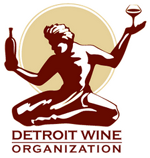With warm weather comes the inevitable search for summer whites that pair well with light summer foods. As you begin that search, don’t overlook Riesling (reece-ling not rye-sling). If you’re anything like me, your first experience with “Riesling” was probably not pleasant. I vaguely recall a sweet, somewhat sticky wine in a tall bottle my girlfriends and I snuck from our parent’s liquor cabinets during Saturday night sleepovers in high school… or maybe that was an “After School Special”… At any rate – for many years, I associated Riesling with “sweet” and, not being a big sweet wine fan, I avoided it. Big mistake. What I remember is probably not Riesling at all, but Liebfraumilch – a wine that also came in a tall, flute shaped bottle and was quite popular at the time I was doing my home version of the “After School Special”. It’s apparently a common confusion, yet the similarities between Riesling and Liebfraumilch generally end at the bottle design. Riesling can, indeed, be sweet, particularly the late harvest and dessert styles. The grape can also produce some of the finest dry white wines in the world. Generally aromatic, with flavors ranging from all types of fruit to honey, minerals and flowers, Riesling is a multifaceted and undervalued grape. Some experts actually consider Riesling to be one of the top white wine grapes in the world. It is a diverse, unique grape that produces fruity wines that pair fabulously with a huge variety of foods. Germany and the Alsace region of France are most widely known for Riesling production, yet some of the finest in the world are produced right here in Michigan. Riesling grapes adapt well to their particular growing climate, and even the particular vineyard where they are grown, and seem to thrive in cooler climate areas, making them perfect for our unpredictable and variable climate. Michigan Rieslings, including 2002 Tabor Hill Semi-Dry Riesling, 2002 Peninsula Cellars Semi-Dry Riesling and 2002 Chateau Grand Traverse Late Harvest Riesling, have recently won Gold and Double Gold medals in international wine competitions around the country. Michigan is known for dry, crisp Rieslings. German Rieslings, which tend to be a little less dry than the Michigan variety, are typically very fruity, which can make them seem sweet – but there’s nothing wrong with that. They also have incredible balance and vibrancy due to their acidity – which balances the fruitiness and sweetness, making the wine refreshing, complex and great with food. They are not oaky like so many Chardonnay’s, so the grape taste dominates rather than the barrel taste. The 2001 and 2002 vintages of German Rieslings are considered world class – and the starting price for truly great varieties is generally less than $20 – so Riesling is good for the budget, too. Some words to look for on the label when purchasing a German Riesling include:
- Kabinett or Spatlese – refer to how ripe the grapes were at harvest, and roughly equate to the body of the wine, with Kabinett being the lighter of the two
- Halbtrocken – off-dry
- Trocken – completely dry
- Mosel-Saar-Ruwer – region named for the Mosel river and tributaries of the Mosel
- Rheingua, Pfalz, Rheinhessen, Nahe – regions named for the Rhine River
France’s Alsace region also produces world-class Rieslings, as do New York, Australia, Austria – demonstrating the versatility of the Riesling grape and it’s ability to thrive in diverse climates. We’ll explore a variety of Riesling styles from various regions at our Wine Down Wednesday on June 30… along with sparklers. Join us for a look at some great summer whites… and open your mind to the possibilities of Riesling.


Leave A Comment